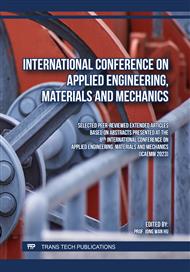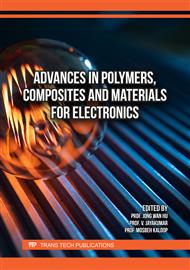p.3
p.13
p.27
p.33
p.41
p.49
p.67
p.73
Numerical Analysis of Hybrid Fibre-Reinforced Concrete Beam-Column Joint
Abstract:
Beam-column joint is the most vulnerable location of a moment-resisting reinforced concrete frame structure. The joint region experiences the maximum shear stress both in vertically and horizontally which is generated due to the shear transfer mechanism from the adjoining beams and columns. The shear capacity and bond stress capacity are the two major factors affecting the strength of a joint core in RC structure. An important discovery recently is the ductile behaviour of the whole structure under repeated loading. The behaviour of the concrete beyond elastic limit which is in the concrete hardening zone can drastically influence the ductility of the concrete. The non-linear stress-strain behaviour after the onset of the initial crack and up to ultimate compressive strength plays an important role in improving ductility. Beyond the ultimate compressive strength, concrete will undergo softening which is neglected in this study as once concrete reaches ultimate stress it is unsafe for service. This material ductility can be fulfilled with the application of high-strength fibres with ductile behaviour. However, the hybridization of two or more fibres can incorporate two different characteristics of the fibre used. The use of ordinary-grade of concrete moreover reduces the shear-resisting capacity of the joint. A hybrid mix of hooked-end steel fibre with basalt fibre and crimpled steel fibre with polypropylene fibre are used with a volume fraction of 1% to 1.4% of the concrete. In this study, ordinary M25 grade concrete and fibre mixed M25 grade concrete is employed under static and cyclic loading. The laboratory tests are also conducted to evaluate the compressive strength, split-tensile strength, and flexural strength of the hybrid mix fibre-reinforced concrete at the age of 28th days. Five full-scale models of the beam-column joint are designed as per the Bureau of Indian Standards. Numerical models of concrete and steel reinforcement are developed. Numerical analysis is carried out using finite element software ANSYS-v21. The behaviours of the beam-column joint are observed under static as well as cyclic loading. Crack patterns, first crack load, initial displacement, ultimate load, and ultimate displacement are observed under static conditions. And under cyclic loading, hysteresis load vs displacement, energy dissipation, and stiffness degradation are observed. The hybridization of hooked steel with basalt fibre gives better results in mechanical strengths and the hybrid effect of crimpled steel with polypropylene fibre gives better results in mechanical strengths. And also under numerical study, the above specimens show an improvement in energy dissipation capacity. Keywords beam-column joint, hybrid fibre reinforced concrete, numerical concrete model, ANSYS, static, reverse cyclic, energy dissipation, stiffness, crack
Info:
Periodical:
Pages:
3-12
Citation:
Online since:
February 2024
Authors:
Price:
Сopyright:
© 2024 Trans Tech Publications Ltd. All Rights Reserved
Share:
Citation:



